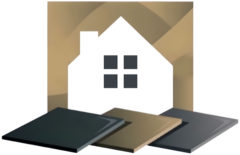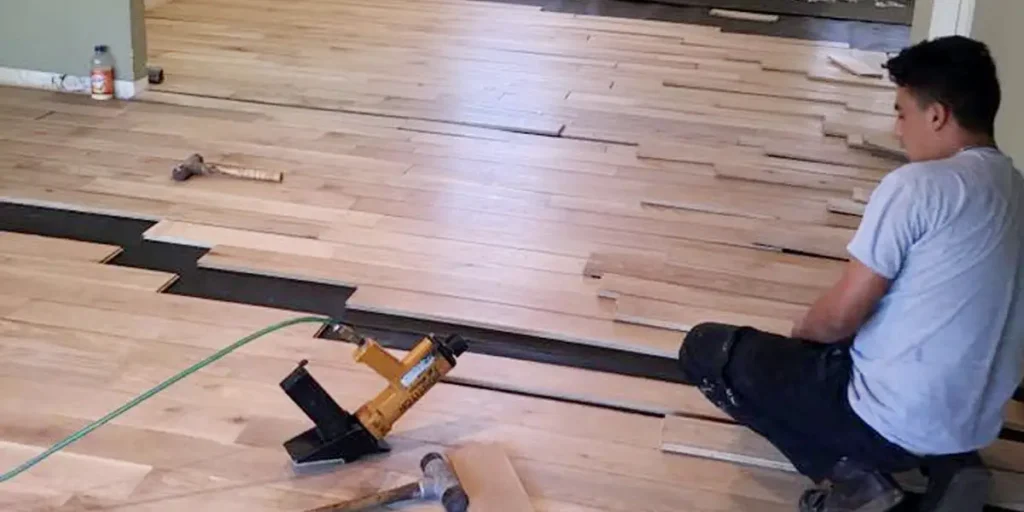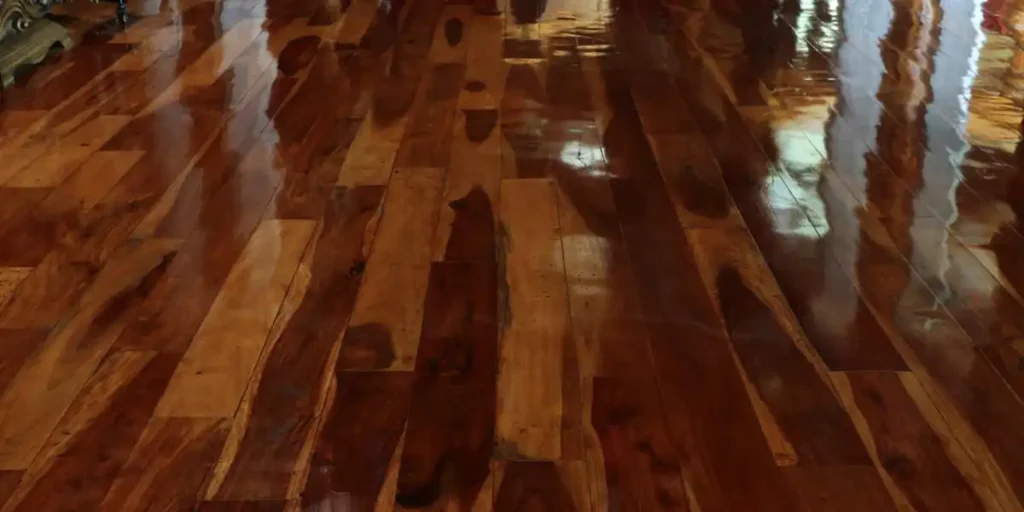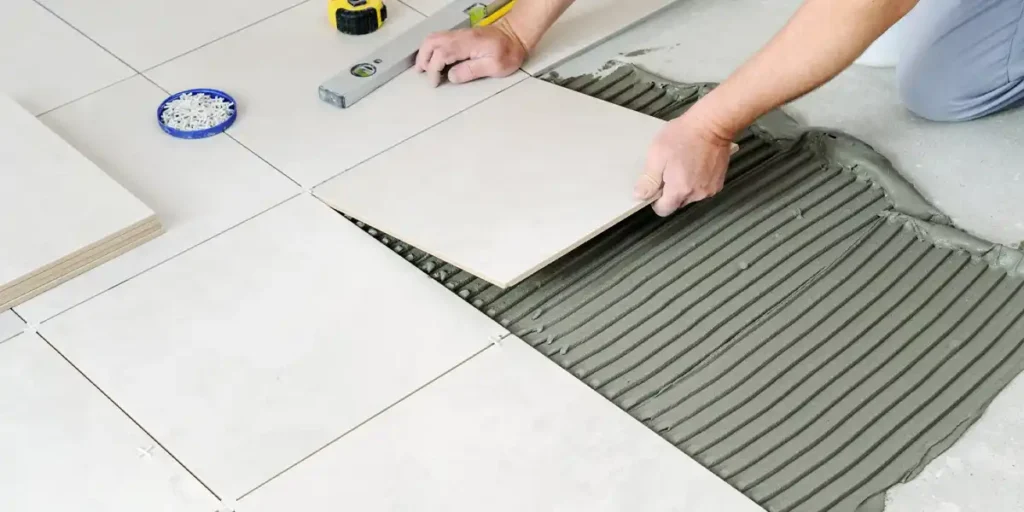If you’re renovating or building a home, flooring is a critical decision. You want durability, beauty, and practicality rolled into one.
Engineered hardwood flooring offers all this and more, making it a popular choice for modern homeowners.
But what exactly is engineered hardwood flooring? How does it compare to solid hardwood?
This guide delves deep into its construction, advantages, and tips for installation and care, giving you all the information you need to make an informed decision.
What is Engineered Hardwood Flooring? The Basics
Engineered hardwood flooring combines the natural beauty of real wood with enhanced stability and practicality. It consists of:
Top Layer (Wear Layer)
A thin slice of genuine hardwood, offering the authentic look of solid wood. Thickness typically ranges from 0.6mm to 6mm, with thicker layers providing better durability and refinishing potential.
Core Layer
Layers of plywood, high-density fiberboard (HDF), or other composite materials give the floor strength and resistance to warping. This construction enhances stability, particularly in environments with fluctuating humidity.
Backing Layer
A stabilizing base layer made of the same material as the core or other durable substances, providing balance and preventing cupping or bowing.
This multi-layer construction is the key to engineered hardwood’s versatility, enabling it to handle moisture and temperature changes better than solid hardwood.
Engineered Hardwood Flooring vs. Solid Hardwood
Choosing between engineered and solid hardwood depends on your specific needs. Here’s how they stack up:
- Durability: Engineered hardwood resists warping and cupping, making it ideal for moisture-prone areas like basements. Solid hardwood, while durable, is more sensitive to environmental changes.
- Refinishing: Solid hardwood can be refinished multiple times. Engineered hardwood’s refinishing potential depends on the thickness of the wear layer, usually 1-3 times for thicker wear layers.
- Cost: Engineered hardwood is often more budget-friendly due to its layered construction.
- Installation: Engineered hardwood is more versatile, allowing for glue-down, nail-down, or floating installation methods. Solid hardwood typically requires nail-down installation.
- Sustainability: Engineered hardwood uses less solid wood per plank, making it a more sustainable choice.
Advantages of Engineered Hardwood Flooring
Why do so many homeowners opt for engineered hardwood? Here are some compelling reasons:
Aesthetic Appeal
The top layer is real hardwood, offering the timeless beauty of natural wood grain.
Moisture Resistance
While not waterproof, it handles humidity better than solid wood, making it suitable for kitchens, basements, and climates with seasonal changes.
Versatility
Available in a range of wood species, colors, and finishes, it fits any design style.
Easy Installation
Floating and click-lock systems simplify the installation process, even for DIYers.
Cost-Effective: Offers the luxury look of hardwood at a more affordable price point.
How to Choose the Right Engineered Hardwood Flooring
When selecting engineered hardwood, consider the following:
- Thickness: Look for a thicker wear layer if you plan to refinish the floor in the future.
- Wood Species: Choose a species that fits your aesthetic and durability needs. Oak and hickory are popular for their toughness, while walnut offers rich tones.
- Finish: Pre-finished planks save time during installation and offer a factory-applied protective coating.
- Installation Method: Decide whether you’ll use glue, nails, or a floating method based on your subfloor and skill level.
Installation: What to Expect
Engineered hardwood flooring offers flexibility in installation. While professional installation ensures the best results, many options are DIY-friendly:
- Floating Installation: Ideal for click-lock planks, requiring no adhesive or nails. Great for uneven subfloors.
- Glue-Down Method: Provides stability and soundproofing but requires careful preparation and precision.
- Nail-Down Installation: Offers traditional stability but is more labor-intensive.
Ensure your subfloor is clean, level, and dry to prevent long-term issues.
Caring for Your Engineered Hardwood Flooring
Maintenance is key to extending the life of your floors. Here are expert tips:
- Cleaning Routine: Sweep or vacuum regularly to remove dirt and grit. Damp mop with a pH-neutral cleaner for deeper cleaning.
- Avoid Moisture: Never allow water to pool on the floor. Clean spills immediately.
- Protective Measures: Use area rugs in high-traffic areas and felt pads under furniture legs to prevent scratches.
Final Thoughts
Engineered hardwood flooring strikes a perfect balance between beauty, practicality, and affordability. Whether you’re renovating a single room or your entire home, it offers the elegance of hardwood without many of the drawbacks.
By understanding its construction, advantages, and maintenance requirements, you’ll be well-equipped to make the best choice for your space.
Transform your home with engineered hardwood flooring, a timeless, versatile, and durable solution.
Upgrade to Engineered Hardwood Flooring! Cardenas Flooring provides expert installation and engineering solutions to suit your style and needs. Contact us today to discuss your project!
FAQs
Can engineered hardwood be installed in moisture-prone areas?
Engineered hardwood is more resistant to moisture than solid hardwood, making it suitable for areas like basements or kitchens. However, it’s not fully waterproof, so it’s not ideal for consistently wet areas like bathrooms. If installing in a basement, ensure proper subfloor preparation and consider adding a moisture barrier to enhance protection against humidity and minor water exposure.
How do I clean engineered hardwood without damaging it?
Clean engineered hardwood by sweeping or vacuuming with a soft brush attachment to remove dirt and debris. For deeper cleaning, use a damp mop with a pH-neutral hardwood cleaner. Avoid soaking the floor or using abrasive cleaners, as excessive moisture or harsh chemicals can damage the wear layer and finish.
Can engineered hardwood be refinished?
Yes, but only if the wear layer is thick enough. Floors with a wear layer of 2mm or more can typically be sanded and refinished 1-3 times. Thinner layers (below 2mm) are unsuitable for refinishing but can be lightly buffed to restore shine. Always consult a professional to assess the refinishing potential of your flooring.
What makes engineered hardwood different from laminate flooring?
Engineered hardwood has a top layer of real wood veneer, giving it the authentic look and feel of solid wood. Laminate flooring, on the other hand, uses a photographic image of wood on its surface. Engineered hardwood is more durable, longer-lasting, and capable of being refinished, unlike laminate, which cannot be refinished and has a shorter lifespan.
How long does engineered hardwood flooring last?
With proper care, engineered hardwood can last 20-30 years or longer. Its lifespan depends on the thickness of the wear layer, the quality of materials, and the maintenance routine. Regular cleaning, avoiding excessive moisture, and using protective pads under furniture can significantly extend its longevity.




